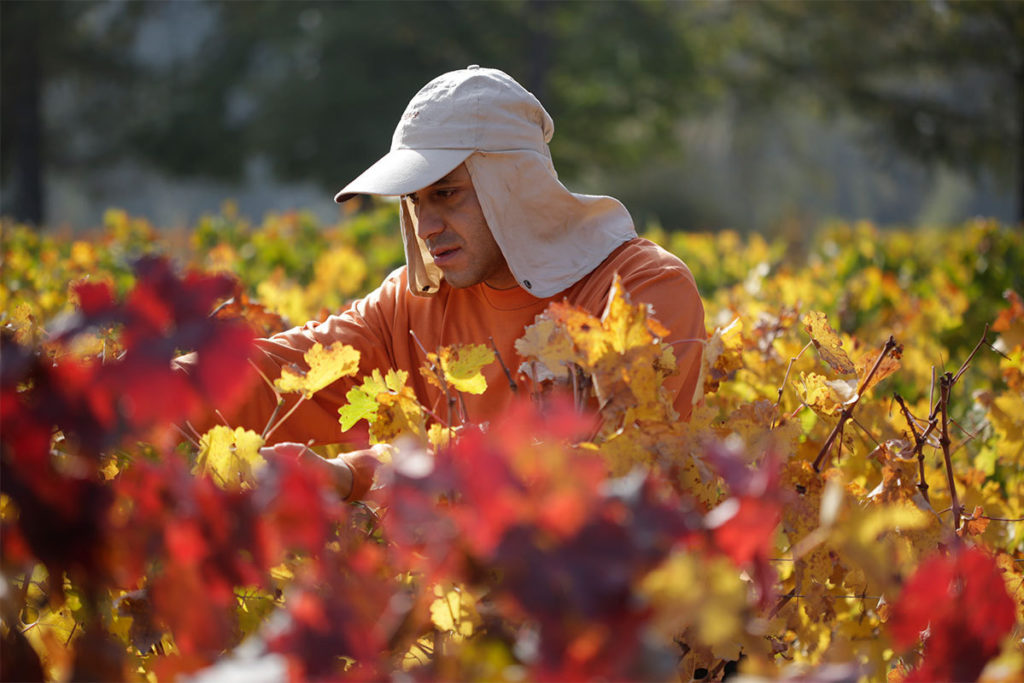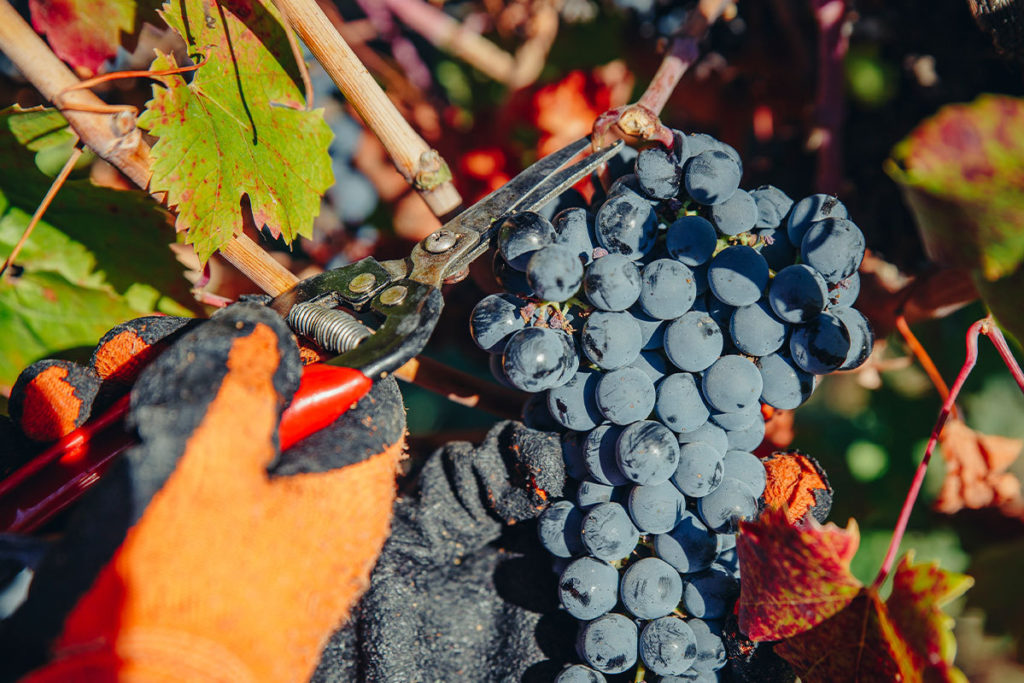How is the 2023 vintage coming? Learn the details of this year’s vintage from the experience of our winemakers, Marcelo Papa and Marcio Ramírez.
Grape harvesting is collecting grapes from vineyards for subsequent processing and wine production once a year when the grapes have reached the right degree of ripeness for harvesting. Its date may vary according to the wine region, grape variety, and climatic conditions.
The grape bunches are cut by pickers using special scissors or mechanical tools, stored in baskets or large containers, and then transported to the winery for processing. Here, the grapes are separated from the stem and pressed to extract the must, fermented to produce wine.
Grape harvest is the most critical date in wine production, and grape grade is essential to the final wine quality.
The harvest period has already begun in some of Chile’s valleys. Viña Concha y Toro winemakers Marcelo Papa and Marcio Ramírez told us the process details in some of our vineyards and their predictions for the 2023 vintage.

Limarí Valley
“All of the Quebrada Seca fruit used for the Amelia Chardonnay, Amelia Pinot Noir, Marques de Casa Concha Chardonnay, and Marques de Casa Concha Pinot Noir wines were harvested between February 10 and 15. The grapes fermented at the end of February, and the wines are now dry in barrels. We delayed about a week due to a rather cold spring. It was a later year, with excellent pH and alcohol. We were able to harvest the fruit very well, and the truth is that we are delighted. We are having a great year in Limarí!” confirms Marcelo Papa, winemaker and Technical Director of the vineyard.
Maipo Valley
“In Maipo, where the Gravas line, Terrunyo Cabernet Sauvignon, and other great wines originate, we had a cold spring, a warmer January, and a hot February and March—this year had a bit of an imbalance with high phenolic maturity and alcohol levels. As of Monday, March 27, we will start harvesting the most important lots, but if we were to measure the Brix degrees (which measure the total sugar concentration in the wine), we should already be harvesting. I think they will not be wines like 2020 (which was more extreme), but like the 2017 vintage, but we will see”, Marcelo Papa tells us.

Cachapoal Valley (Peumo)
“Although we have not yet harvested the grapes that give rise to Carmín de Peumo, Terrunyo Carmenère, Gran Reserva Carmenère, and Marques de Casa Concha Carmenère, it looks like a fairly healthy vintage, a little warmer than last year. The latter is mainly because of high temperatures in February and March. The good thing is that we have had a cool breeze in the afternoon, and it has been cold at night. It looks like a good crop, a delicious fruit. Most likely, the harvest will be a couple of weeks earlier, but with good prospects”, says Marcio Ramírez, winemaker of all Concha y Toro’s Carmenere.
Casablanca Valley
“Casablanca, where Gran Reserva Sauvignon Blanc comes from, is having a pretty good season after a somewhat complex summer due to water shortages. Given the winter rains, the grapes had good water availability during the spring, so their growth has been super good, with good vigor. In addition, the whole coast, in general, has been cooler, so the harvest comes later due to higher Brix and prolonged ripening, allowing better decisions to achieve top quality. Marcelo Papa adds a bit in the tone of what Limarí has already shown us”.

